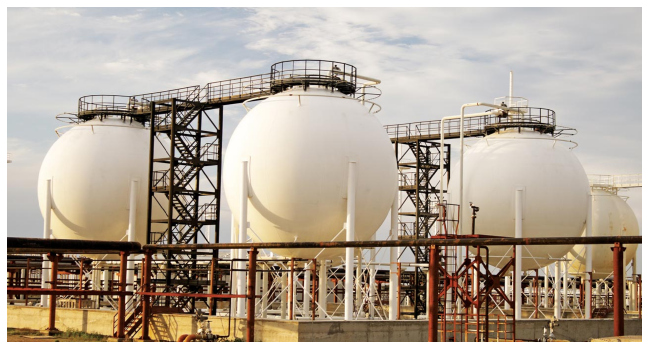The Federal Government has eventually fixed June 6 for the technical commissioning of the 300MMscfd capacity Kwale gas gathering and injection facility in the Niger Delta, after it was put on hold following the nationwide industrial strike by the Labour Unions.
The injection facility located in the Umusam Community, near Kwale in Delta State, Niger Delta, is a joint venture between Nedogas Development Company Limited (NDCL), Xenergi Limited and NCDMB Capacity Development Intervention Company, in collaboration with the NNPC Gas Infrastructure Company (NGIC), a subsidiary of the Nigerian National Petroleum Company (NNPC) Limited.
The Nigerian Content Development and Monitoring Board announced that, following its successful completion, the technical commissioning will take place on Thursday, June 6, 2024.
Ekperikpe Ekpo, Minister of State for Petroleum Resources (Gas), will conduct the official commissioning ceremony.
The Nigerian Content Development and Monitoring Board (NCDMB) Executive Secretary, Engineer Felix Ogbe, and Delta State Governor, Rt. Hon. Sheriff Francis Orohwedor Oborevwori, would support the Minister.
The KGG facility was designed to handle stranded gas resources in Nigeria’s OML 56 oil province, by providing the opportunity for independent operators in the area, to monetise natural gas from their fields through the gas gathering, compression, injection and metering infrastructure of the KGG for quick market access.
The KGG hub, which has been tied into the NGIC-owned and operated 48-inch OB-3 gas trunk line, is now fully commissioned with gas injection capacity totalling approximately 50 MMscfd comprising 20MMscfd from the Nedogas Plant, located 3km away in Energia’s Ebendo field, and another 30 MMscfd coming from the Matsogo field operated by Chorus Energy Limited. Injected gas volumes are gradually and steadily being ramped up.
“This project represents a significant milestone in Nigeria’s decade of gas initiative, as well as a major achievement in the quest to provide gas into the OB3 trunk line and monetise natural gas resources from the OML 56 producer cluster,”
With the successful injection of gas from the Energia/Oando JV and the Chorus operated Ebendo and Matsogo fields respectively into the OB3, NCDMB said the KGG Facility is now poised to receive additional gas from nearby fields, including those operated by First Hydrocarbon Nigeria (FHN), Pillar Oil, and Midwestern Oil & Gas, all aimed at positioning KGG as a fully-fledged gas-gathering facility and hub, with single point injection of up to 300 MMscfd of gas into the OB3 via the KGG tie-in
The plan is to expand the capacity of the KGG facility to 600 MMscfd in the second phase.
In addition to the gas delivery obligations of the facility, the KGG will also be supplying the Delta State Economic Zone (DSEZ) from an integrated supply node within the manifold at the hub.
NCDMB’s equity investment in NDCL is one of the strategic projects geared towards actualising FG’s aspirations in key areas of the oil and gas industry.
Most of NCDMB’s third-party investments are targeted at actualising the Federal Government Decade of Gas programme.
“The investments are in line with the Board’s mandate to build capacity and catalyze local projects in the Nigerian oil and gas industry as enshrined under the Nigeran Oil and Gas Industry Content Development (NOGICD) Act,” the statement added.
Speaking on the project, the Executive Secretary NCDMB, Felix Ogbe, enthused that the success story of NEDOGAS at Kwale, Delta State could be replicated in other oil- and gas-producing communities to minimise gas flaring. He declared the Board’s readiness to continue collaborating with the company.
Their model should be extended to other parts of the country where gas flaring is continuing. They have shown that with the modular system, we can quickly remove flaring from our operations in Nigeria.”
The Managing Director of NDCL, Debo Fagbami, explained that with the completion of the first phase of the KGG Facility, the proof-of-concept to readily monetise gas, has now been established to the extent of eradicating the pain of seeing an invaluable resource being wasted.
“Rather than just being concerned about ending gas flaring – he sees opportunities to harness the potential of the flare sites from these oilfields which will ultimately convert a “wasting” resource into an economic asset used to generate cleaner energy,” he said.
With an estimated 180 billion cubic feet of proven Natural gas reserves, Nigeria has the ninth largest concentration in the world, however, sadly enough, the country continues to flare significant quantities of Associated gas which has relegated the health and environmental well-being of Nigerians to the background for over 60 years.
Natural gas is still a reasonably clean fossil fuel, according to the government, and it offers a practical switch to renewable energy, which is essential for the expansion of developing nations like Nigeria.
The announcement further stated that “the KGG facility is set to create hundreds of direct and indirect jobs for indigenes of the host and nearby communities.”
The administration has consistently stated that switching to natural gas is a feasible way to achieve renewable energy.




